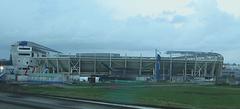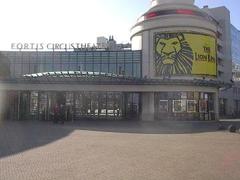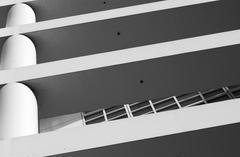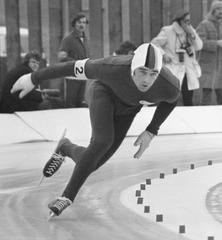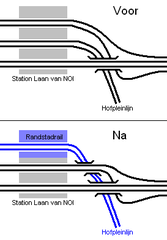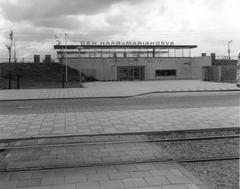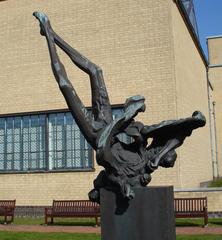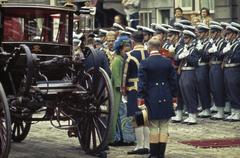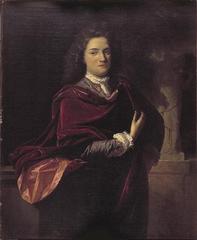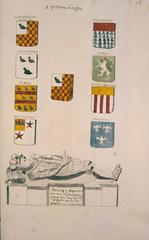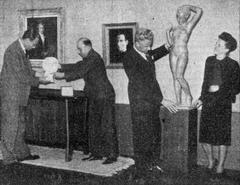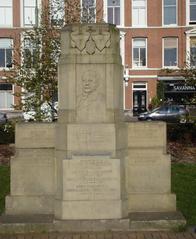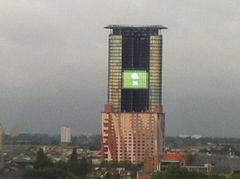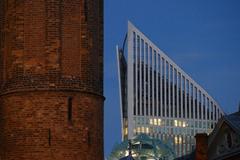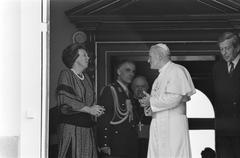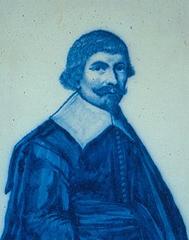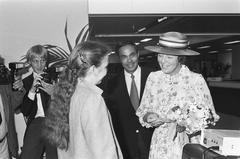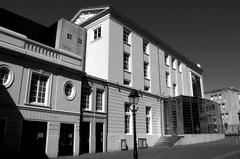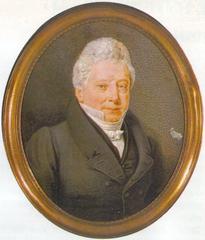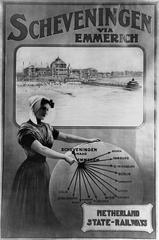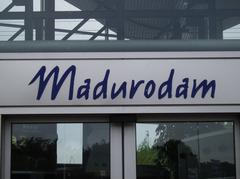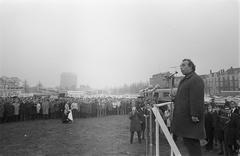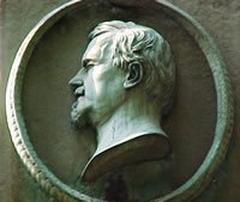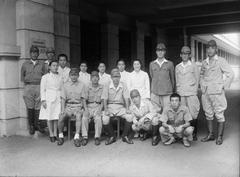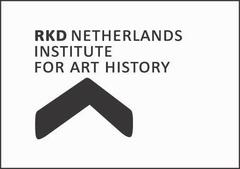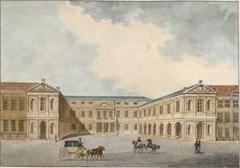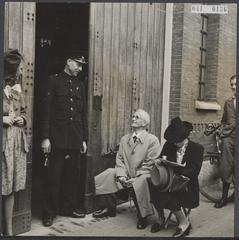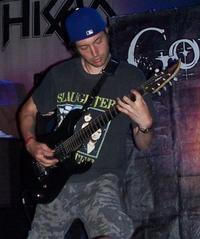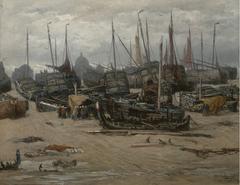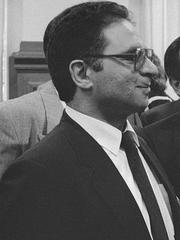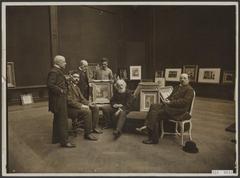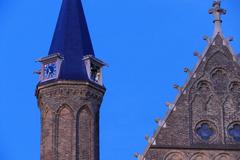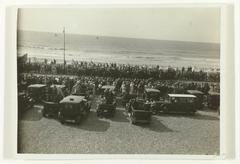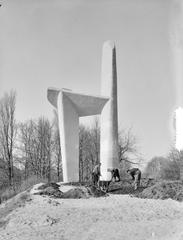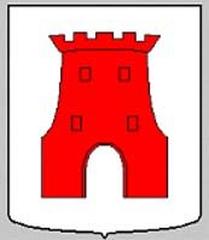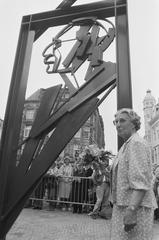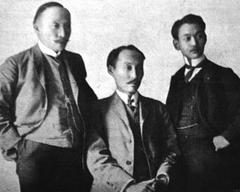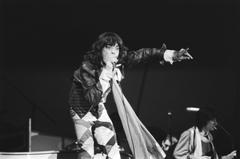
Kloosterkerk The Hague: The Definitive Guide to Visiting Hours, Tickets, History & Cultural Highlights
Date: 03/07/2025
Introduction: Kloosterkerk—A Pillar of The Hague’s Spiritual and Cultural Heritage
Located on the elegant Lange Voorhout in the heart of The Hague, the Kloosterkerk is one of the city’s most storied and architecturally significant landmarks. Founded in the late 14th century as the church of a Dominican monastery, the Kloosterkerk has borne witness to dramatic shifts in Dutch religious, political, and cultural life. From its medieval consecration in 1407 to its transformation during the Reformation and its ongoing role as a vibrant hub for worship, music, and community, the Kloosterkerk stands as a living testament to The Hague’s rich historical tapestry (Spotted by Locals; ExploreCity.life).
Whether you are drawn by the soaring Gothic brickwork, the monthly Bach cantata services, or the church’s connections to the Dutch royal family, this comprehensive guide covers everything you need: history, visiting hours, tickets, accessibility, guided tours, and tips for integrating your visit into an unforgettable The Hague itinerary (Kloosterkerk Official; TouristPlaces.Guide).
Table of Contents
- History and Foundation
- Architectural Evolution
- Cultural and Social Significance
- Artistic Treasures & Musical Heritage
- Notable Figures & Memorials
- Visitor Information
- Events and Activities
- Nearby Attractions & Suggested Itineraries
- Practical Tips for Visitors
- Frequently Asked Questions (FAQ)
- Summary & Call to Action
- References
History and Foundation
The Kloosterkerk (“Cloister Church”) originated as the spiritual center of a Dominican monastery established between 1397 and 1400, responding to the needs of a rapidly growing medieval The Hague. Consecrated in 1407, the church was built in the Gothic style using locally made bricks, with a layout reflecting the Dominican commitment to both austerity and the ability to serve large congregations (Spotted by Locals; Wikipedia).
The original monastic complex extended beyond the church itself, including gardens, living quarters, and spaces for charity and education. The Dominicans were instrumental in shaping the city’s early spiritual and intellectual life.
Architectural Evolution
Medieval Origins and Transformation
The Kloosterkerk exemplifies Dutch Gothic architecture: pointed arches, ribbed vaults, tall stained-glass windows, and an imposing but unadorned brick façade. The church’s structure has weathered significant historical events, most notably the 16th-century Reformation, during which the Dominican order was dissolved, much of the monastery was demolished, and the church’s interior was reconfigured for Protestant worship (Orangesmile).
Modern Restorations
Restoration efforts in the 20th and 21st centuries have painstakingly preserved the medieval fabric while introducing necessary modern amenities. Original features such as the wooden roof and stone pillars have been conserved, and sensitive adaptations (like the removal of the wall between nave and choir) have improved the space for both worship and concerts (Kloosterkerk Official; SpottingHistory).
Cultural and Social Significance
From Monastery to Protestant Parish
The Kloosterkerk’s journey from Catholic monastery to Protestant parish is emblematic of The Hague’s—and the Netherlands’—tradition of religious evolution and tolerance. Its interior, focused on the pulpit and organ rather than elaborate altars, reflects Reformed theological priorities centered on scripture and congregational music (Wikipedia).
Royal and Civic Connections
The church enjoys a special connection with the Dutch royal family, having hosted royal ceremonies and serving as a place of worship for Queen Beatrix and other royals. Its location, within walking distance of the Binnenhof and Mauritshuis, underlines its prominence in the city’s public life (Spotted by Locals).
Community and Intercultural Engagement
Today, the Kloosterkerk is a vibrant venue for lectures, debates, and community events that reflect The Hague’s international character. Its open-door policy and outreach programs embody the city’s values of inclusivity and dialogue (ExploreCity.life).
Artistic Treasures & Musical Heritage
Stained Glass & Decorative Art
The interior is graced with stained glass by Lou Asperslagh (1893–1949), featuring vibrant biblical scenes, and ceiling rosettes by Gerhard Jansen (1868–1956). These elements echo the Gothic style while enriching the church’s atmosphere (SpottingHistory).
Historic Organ & Music Program
The Marcussen pipe organ (installed in 1966) is a focal point for the church’s celebrated musical life. Regular cantata services, particularly the monthly Bach performances with the Residential Bach Orchestra and Choir, attract music lovers citywide (Kloosterkerk Official).
Manuscripts & Artistic Heritage
The Kloosterkerk’s history is entwined with The Hague’s medieval artistic culture, when illuminated manuscripts like the “Hours of Margaret of Cleves” were produced under court patronage (SpottingHistory).
Notable Figures & Memorials
Daniel Gabriel Fahrenheit
The church is the final resting place of Daniel Gabriel Fahrenheit, inventor of the mercury thermometer and the Fahrenheit scale. A modest bronze plaque in his honor can be found on the left wall—a hidden gem for visitors interested in science history (Spotted by Locals).
Other Memorials
In addition to Fahrenheit, the church commemorates significant Dutch families and figures through stone plaques and historical artifacts that document both religious and civic history.
Visitor Information
Opening Hours & Admission
- General Hours: Monday–Saturday, 10:00 AM–5:00 PM; Sunday, 12:00 PM–4:00 PM (may vary on holidays and during special events).
- Summer Season (May–September): Often features extended hours.
- Admission: Free for individual visitors; donations are encouraged. Tickets are required for special concerts and events (Kloosterkerk Official).
Accessibility
- Fully accessible for wheelchair users, with step-free entry and accessible restrooms.
- For specific needs, contact the church office in advance (Accessible The Hague).
Guided Tours
- Guided tours are offered by volunteers or by appointment, often in multiple languages.
- Audio tours are available via the izi.TRAVEL app.
- Printed materials and booklets are sold on-site.
Directions
- Address: Lange Voorhout 4, 2514 ED Den Haag, Netherlands
- Public Transport: Tram lines 1 and 16, bus routes 22 and 24 stop at ‘Kneuterdijk’. The Hague Central Station is nearby.
- By Car: City center parking available but limited.
- Cycling: Bike racks located near the church.
Facilities
- Restrooms: Not inside, but nearby cafés and public buildings offer facilities.
- Gift shop: Postcards, CDs, and booklets are available.
- Seating: Benches and chairs in the nave.
- Wi-Fi: Not available; mobile coverage is strong.
Events and Activities
- Sunday Services: Open to all, featuring choral music.
- Concerts: Monthly cantata services and classical performances.
- Lectures & Exhibitions: On art, faith, and social topics.
- Community Events: Fairs, charity drives, and intercultural celebrations.
Check the official agenda for up-to-date schedules.
Nearby Attractions & Suggested Itineraries
Kloosterkerk’s central location allows easy access to:
- Mauritshuis: Dutch Golden Age masterpieces.
- Escher in Het Paleis: Graphic art by M.C. Escher.
- Binnenhof: The Dutch seat of government.
- Noordeinde Palace: Official royal residence.
- Pulchri Studio & Hofvijver: Art galleries and scenic cityscapes.
Combine your visit with a stroll along Lange Voorhout or a coffee at a nearby café.
Practical Tips for Visitors
- Best Times: Visit on weekday mornings for a quieter experience.
- Concerts: Book tickets in advance for popular events.
- Dress Code: Modest attire is appreciated.
- Photography: Permitted outside of services and events; avoid flash.
- Accessibility: Contact staff for assistance if needed.
Frequently Asked Questions (FAQ)
Q: What are Kloosterkerk’s visiting hours?
A: Monday–Saturday 10:00 AM–5:00 PM, Sunday 12:00 PM–4:00 PM; may vary for holidays and events.
Q: Is there an entrance fee?
A: General admission is free; donations are welcome. Tickets are required for concerts and special events.
Q: Are guided tours available?
A: Yes, both in-person and audio tours are available.
Q: Is the church wheelchair accessible?
A: Yes, with step-free access and accessible restrooms.
Q: Can I take photographs inside?
A: Yes, except during services or concerts.
Q: Where can I find the event schedule?
A: Visit the official website for the latest agenda.
Summary & Call to Action
The Kloosterkerk is a living monument at the heart of The Hague—an architectural gem, a center of music and art, and a beacon of tolerance and community. Free admission, a welcoming atmosphere, and a calendar full of services and cultural events make it a must-visit for anyone exploring the city. Plan your visit today, check the official website for updates, and enrich your experience with a guided or audio tour. For more travel tips and personalized itineraries, download the Audiala app and explore The Hague beyond the Kloosterkerk!
References
- Spotted by Locals
- SpottingHistory
- ExploreCity.life
- Kloosterkerk Official
- Wikipedia
- Orangesmile
- TouristPlaces.Guide
- OranaTravel
- Accessible The Hague






